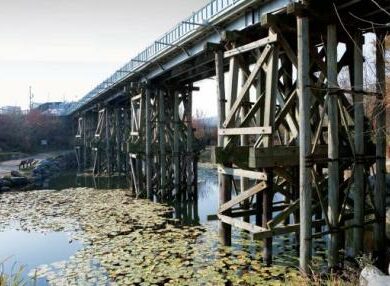
The Bridge of Freedom is located behind Mangbaedan Altar of Injingak Pavilion, and was installed to pay respect to the displaced people who died yearning for their family and hometown in North Korea and give their spirits consolation. Originally, the Gyeongui Line Railroad Bridge had two bridges that headed up and down, but they were destroyed via bombing and only the pier remained. Later, the west bridge was restored for the purpose of exchanging prisoners of war, and a temporary bridge was installed at the south end. The bridge used to be called Dokgaedari Bridge after the name of Jayeonmaeul Village in Nosang-ri, and was given its current name in 1953 after 12,773 Korean armed forces and UN forces who became prisoners of war returned by crossing the bridge. The bridge is a mixture of wood and steel members consisting of six traves. It has a length of 83m, a width of 4.5-7m and a height of around 8m. The Bridge of Freedom, a symbol of the tragedies of the Korean War, is a temporary bridge with no architecturally noteworthy element but holds significance as a representative modern heritage that symbolizes the cold war through embodying the “return to freedom.”
Available
Available
